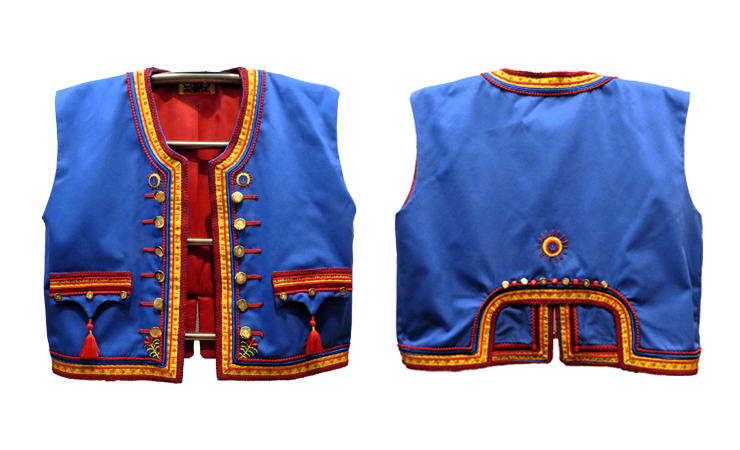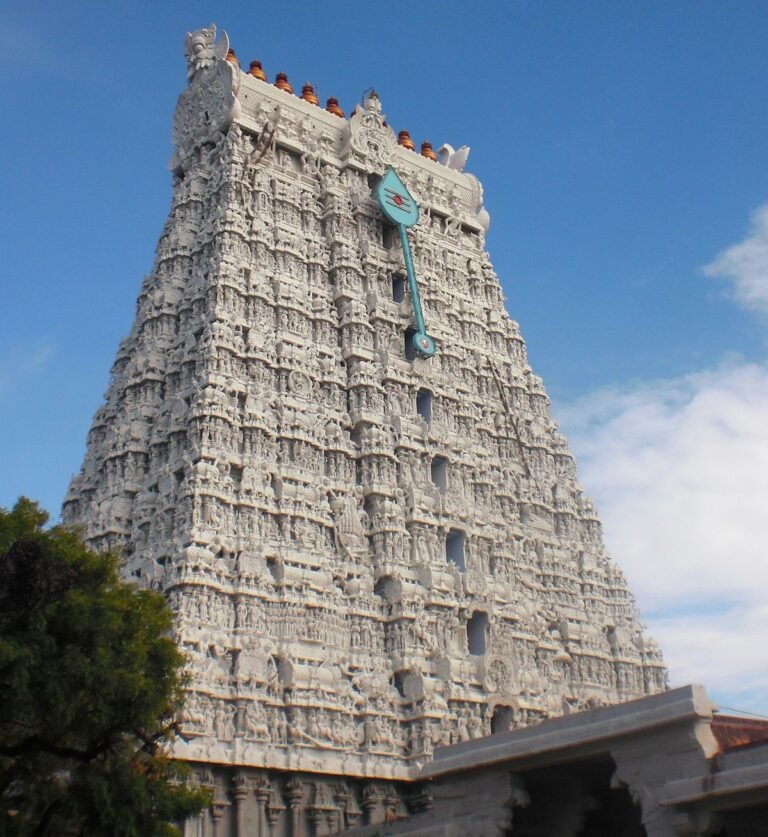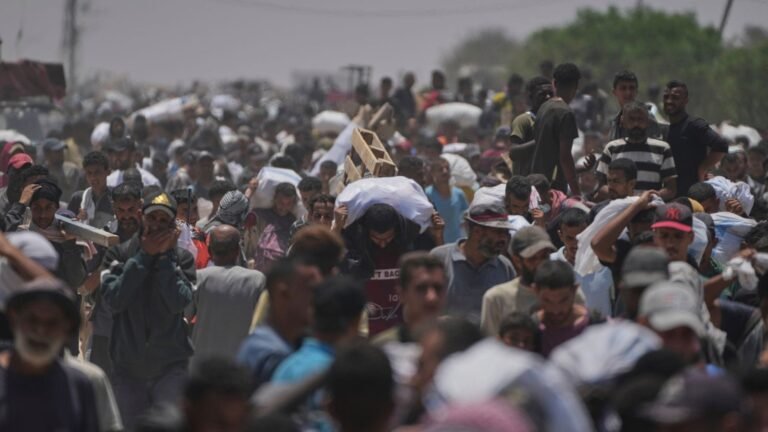
Slovak clothing reflects a rich cultural heritage shaped by centuries of tradition, rural life, and regional diversity. Folk costumes, known as kroje, have long symbolized Slovak identity and pride, with specific styles varying across different regions of the country. These garments were once worn for daily life but are now primarily reserved for festivals, weddings, and national celebrations.
Slovak Men’s Clothing
Kordovka (Decorated Vest)

The kordovka is a traditional Slovak vest worn over a linen shirt, often crafted from wool or heavy fabric and richly adorned with embroidery, beads, and sometimes metal buttons. It served both a decorative and practical purpose, providing warmth and a structured silhouette. The style, colors, and patterns of the kordovka varied depending on the region, with more intricate designs worn during festivals and celebrations. It remains one of the most recognizable symbols of Slovak male folk attire.
Košeľa (Traditional Shirt)

The košeľa is a loose-fitting, long-sleeved white shirt made of linen or hemp, forming the base of most male folk costumes in Slovakia. Embroidery often decorates the collar, cuffs, and front panel, showcasing local craftsmanship and regional style. In some areas, especially in central Slovakia, the embroidery is colorful and geometric, while other regions favor more subtle, monochromatic stitching. The shirt is typically worn tucked into trousers and is essential to the traditional look.
Nohavice (Embroidered Trousers)

Traditional Slovak trousers, known as nohavice, are usually made of wool or linen and are sometimes decorated with bright embroidery along the seams or cuffs. In mountainous regions like Liptov or Orava, the pants are narrower and shorter, worn tucked into leather boots, while southern Slovak designs tend to be wider and looser. These trousers are both functional and ornate, reflecting the lifestyle and environment of the wearer’s region.
Opasok (Leather Belt)

The opasok is a wide leather belt, often intricately embossed with patterns and sometimes fitted with metal studs or decorative buckles. Beyond holding clothing in place, it symbolized strength and masculinity and could be used to carry small tools or a knife. In many regions, the belt was a status symbol, with wealthier men wearing more elaborately designed versions. It completes the traditional ensemble with both style and purpose.
Klobúk (Felt Hat)

A traditional Slovak klobúk is typically made from black or dark-colored felt, with a narrow or wide brim depending on the region. Some versions are adorned with feathers, ribbons, or embroidery, especially for festive occasions. The hat plays an important role in conveying social status and is worn proudly during weddings, folk dances, and harvest festivals. Its elegant design continues to inspire contemporary interpretations in Slovak fashion.
Slovak Women’s Clothing
Rukávce (Embroidered Blouse)

The rukávce is a traditional blouse made from linen, distinguished by its voluminous sleeves and elaborate embroidery around the neckline and cuffs. Each region in Slovakia developed unique embroidery motifs—ranging from delicate florals to bold geometric shapes—that served as a visual marker of the wearer’s origin. Often worn under a vest or bodice, the blouse combined elegance with functionality, and was typically tied at the neck with a decorative ribbon or lace.
Lajblík (Folk Vest)

Worn over the blouse, the lajblík is a close-fitting vest made of velvet or wool and heavily decorated with embroidery, beads, or lace trim. It shapes the waist and adds a refined structure to the folk ensemble, with variations in color and pattern based on regional customs. In some areas, the vest is sleeveless, while in others, it features short, puffed sleeves. The lajblík is a centerpiece of Slovak female folk fashion, often paired with festive skirts.
Sukňa (Folk Skirt)

The sukňa is a wide, pleated skirt worn by Slovak women, typically made from cotton, linen, or wool and featuring vibrant floral or striped patterns. It is usually worn with an underskirt to add volume, creating a full and graceful silhouette. The number of layers and the richness of the fabric could signify a woman’s marital status or the importance of the occasion. These skirts are often completed with a coordinating apron for added color and texture.
Zástera (Apron)

A defining feature of women’s folk dress, the zástera is worn over the skirt and often contrasts in color and design. Originally used to protect the skirt during daily chores, the apron evolved into a decorative garment, with embroidery, lace, and ribbon embellishments. In wedding or festival attire, aprons could be highly ornate, showcasing the skill of the maker and the wearer’s taste. The apron is tied at the back, and the bow placement sometimes held symbolic meaning.
Čepiec (Traditional Headdress)

The čepiec is a traditional headdress worn by married women in Slovakia, typically made from white fabric and adorned with lace, ribbons, or gold thread. It signified marital status and modesty, with styles varying from region to region—some tightly fitted like a cap, others more elaborate with trailing ribbons or decorative embroidery. In some parts of Slovakia, unmarried girls would wear floral wreaths or ribbons instead. The čepiec remains a deeply symbolic and visually striking part of the traditional outfit.
Modern Clothing in Slovakia Today

Today, Slovak fashion blends contemporary European trends with a growing appreciation for folk heritage. Locals typically wear modern clothing such as jeans, tailored coats, knitwear, and athletic shoes, with urban styles dominating in cities like Bratislava and Košice. However, there is a rising interest in incorporating traditional embroidery, fabrics, or accessories into casual and formal attire. Slovak designers often draw on folk motifs to create modern collections that reflect national pride while embracing international style.






